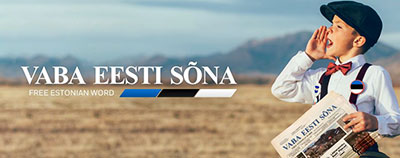Head uut aastat lovers of kitties aka kiisud! If you haven’t yet visited the websites of animal shelters in Estonia, I suggest you do. (Web addresses listed at the end.) The stories, names and descriptions of the cats (much more numerous than dogs), waiting to find new homes, penned by dedicated vaba/tahtlikud (volunteers) are very heartwarming, not to mention engaging and admirable. It is not uncommon to become hooked, visiting the võrgu/lehed (webpages) regularly, more than news sites, or Netflix series, rooting for your favorites to be adopted. Sometimes it seems they must have full-time writers on staff.

Photo: www.kassideturvakodu.ee
But to deconstruct the calender cover: Loomade turva/kodu is an animal shelter, literally “safe home”. Many such shelters are specifically for kassid (cats), such as the one in the Kadriorg neighborhood of Tallinn, which has printed this kolmas (third) annual kalender. There are also laste/turva/kodud (children’s shelters) and naiste/turva/kodud (women’s shelters). Another name for all of these is varju/paik, e.g. kodutute (homeless peoples’) varju/paik, literally “shelter place”, while eakad inimesed (elderly people) may live in a hoolde/kodu, nursing home, literally “care home”.
The turva- prefix of turvakodu comes from turvaline = safe. Other examples of this are (lapse auto) turva/tool = car seat; turva/mees, -naine = security guard; turvama = to safeguard, secure, protect; turvis = armor, (aka raud/rüü); rehvi (autokummi) turvis = tire tread.
A hea/tegevuslik (charitable, not-for-profit) calender means, in a sentence: “Kogu teenitud tulu läheb 100% meie hoolealuste raviarvete katmiseks” (All income earned goes 100% toward covering the medical bills of those in our care). The full name of the organization is preceded by the akronüüm MTÜ after all – mitte/tulundus/ühing (nonprofit organization).
And now for the best subtitle: NURRUVAD HURMURID. Nurruma is to purr. The sound cats make while purring (to the Estonian ear) is “nurrrrrr“. That’s why a lot of kassid in Eesti are named Nurr, Nurri, Nurrik or even Nurmur – an abbreviation of nurruv hurmur! (I initially mistook Maali for Nurmur. Silly me! Nurmur, the isane (male) triibik has green eyes, while Maali’s are hazel (metsa/pähkli/karva!)). A hurmur should not be confused with a Hummer. An SUV (sports utility vehicle) is a maastur in Estonian. Different topic altogether. Hurm is charm, allure, appeal, magical attraction, spell, intoxication. You get it. The last line of the 3rd verse of “Saaremaa valss“: “…ja kirgliku suudluse esmane hurm.” The first spell of a passionate kiss. (Lyrics Debora Vaarandi, music Raimond Valgre.) Hurmama = to charm, hurmatud = charmed, and a HURMUR does the hurmamine – casts a spell. Not to be confused with the orange-skinned tropical fruit hurmaa = a persimmon. Go figure.
Hurm in sisterly Finnish is “hurma” (nominative singular) and they may both be related to urm = an old form of the word for blood, bloody wound. (Eesti etümoloogia/sõna/raamat).
The compound word pet name hurmur/kiisu (charmer kitty) could also be described as a nurruline vurruline – a purring whisker bearer. Oh, it’s simply endless! But hopefully the troves of homeless, feral, hüljatud (abandoned) cats are not.
Many of you have no doubt read about Žorik, the famous stray dog from the Kalamaja neighborhood of Tallinn, who now lives on a secure rural property and had a statue erected in his honor in Põhja-Tallinn on October 8, 2020, World Animal Day. He was written about in the Washington Post. More about him here.
Websites to pet: www.kassideturvakodu.ee, www.kassiabi.ee, www.pesaleidja.ee, www.varjupaik.ee. The latter, Varjupaikade MTÜ, is a larger and slightly less personal, albeit crucially essential network with seven shelters all over the country. All the shelters listed have Facebook pages.
Riina Kindlam, Tallinn
















